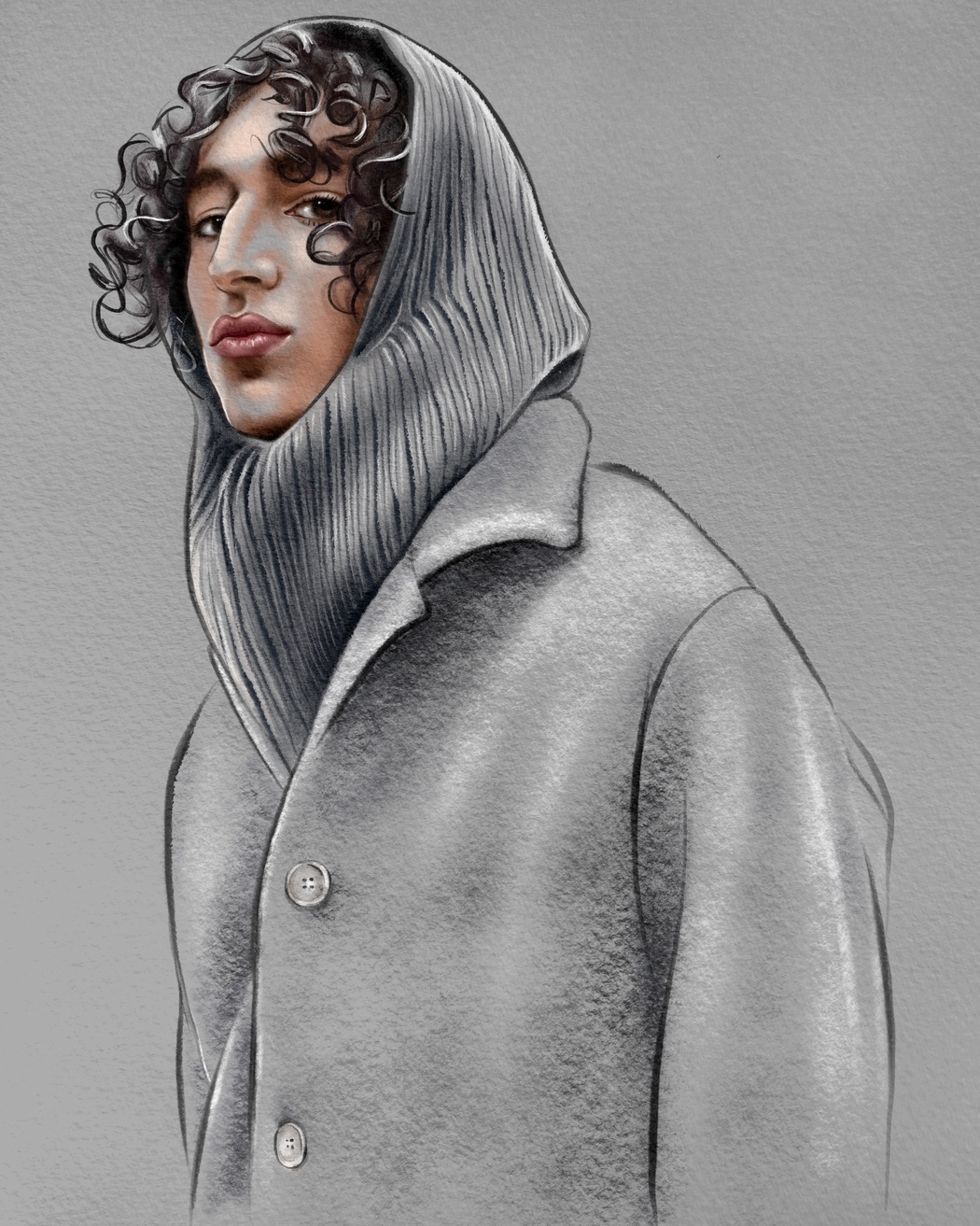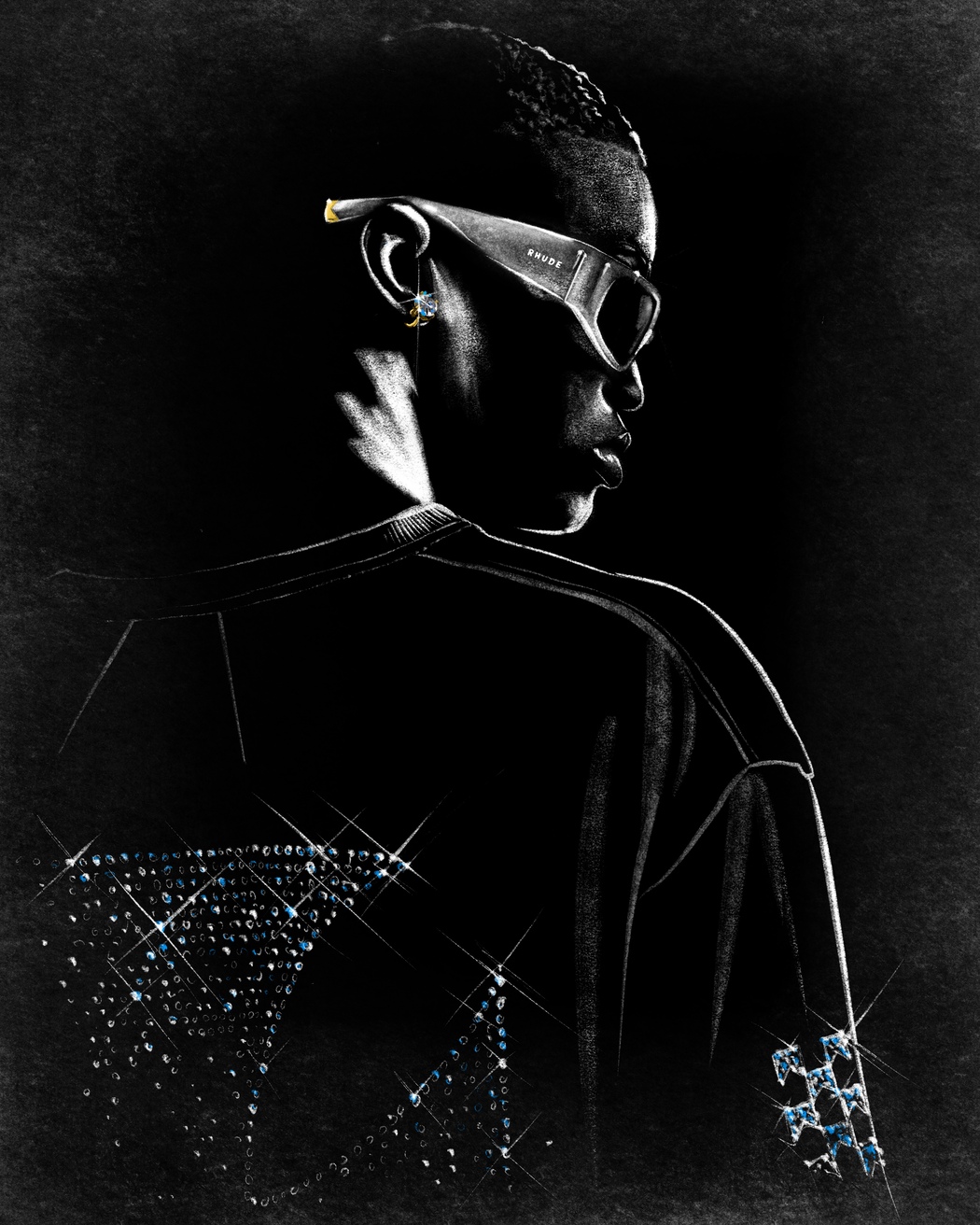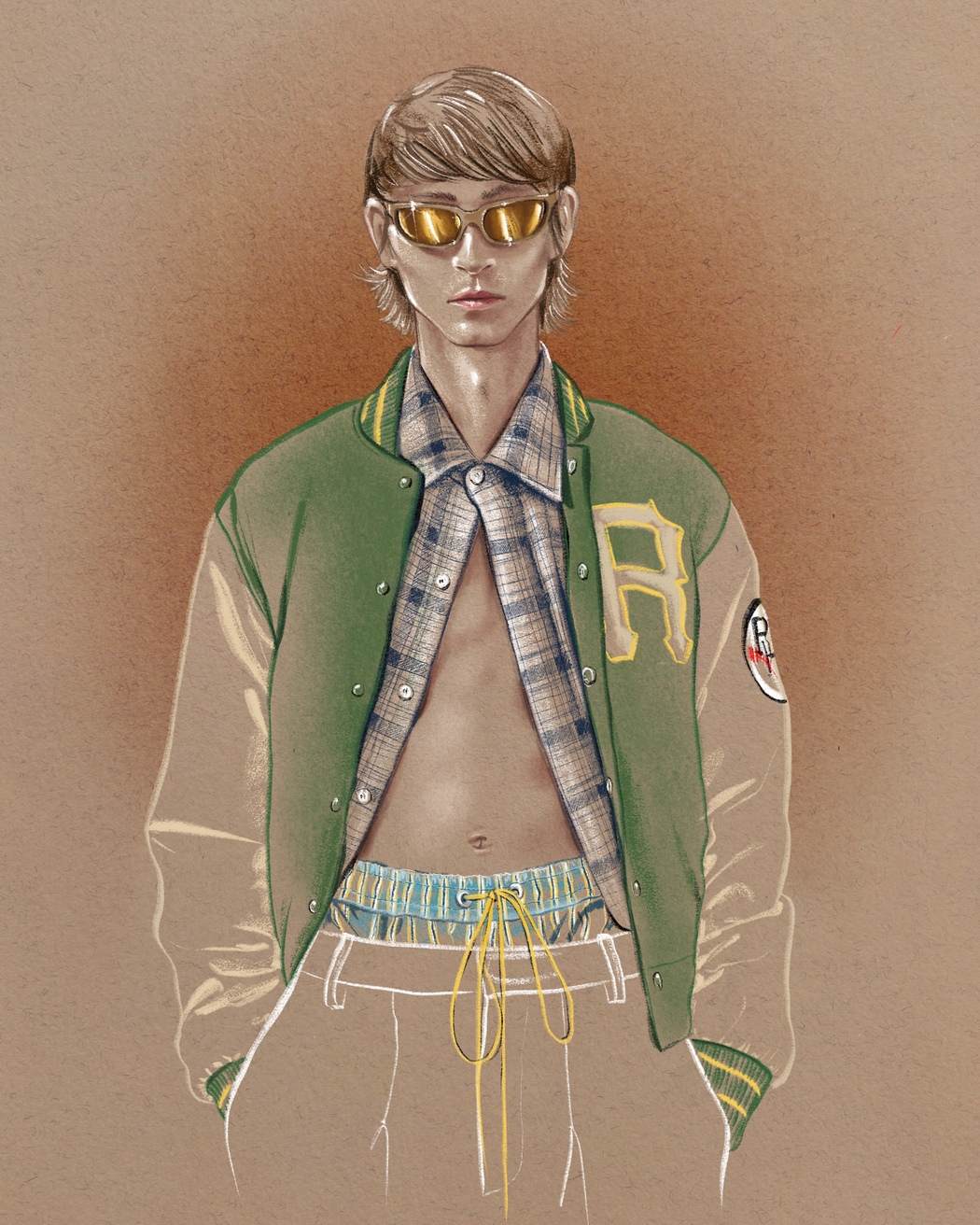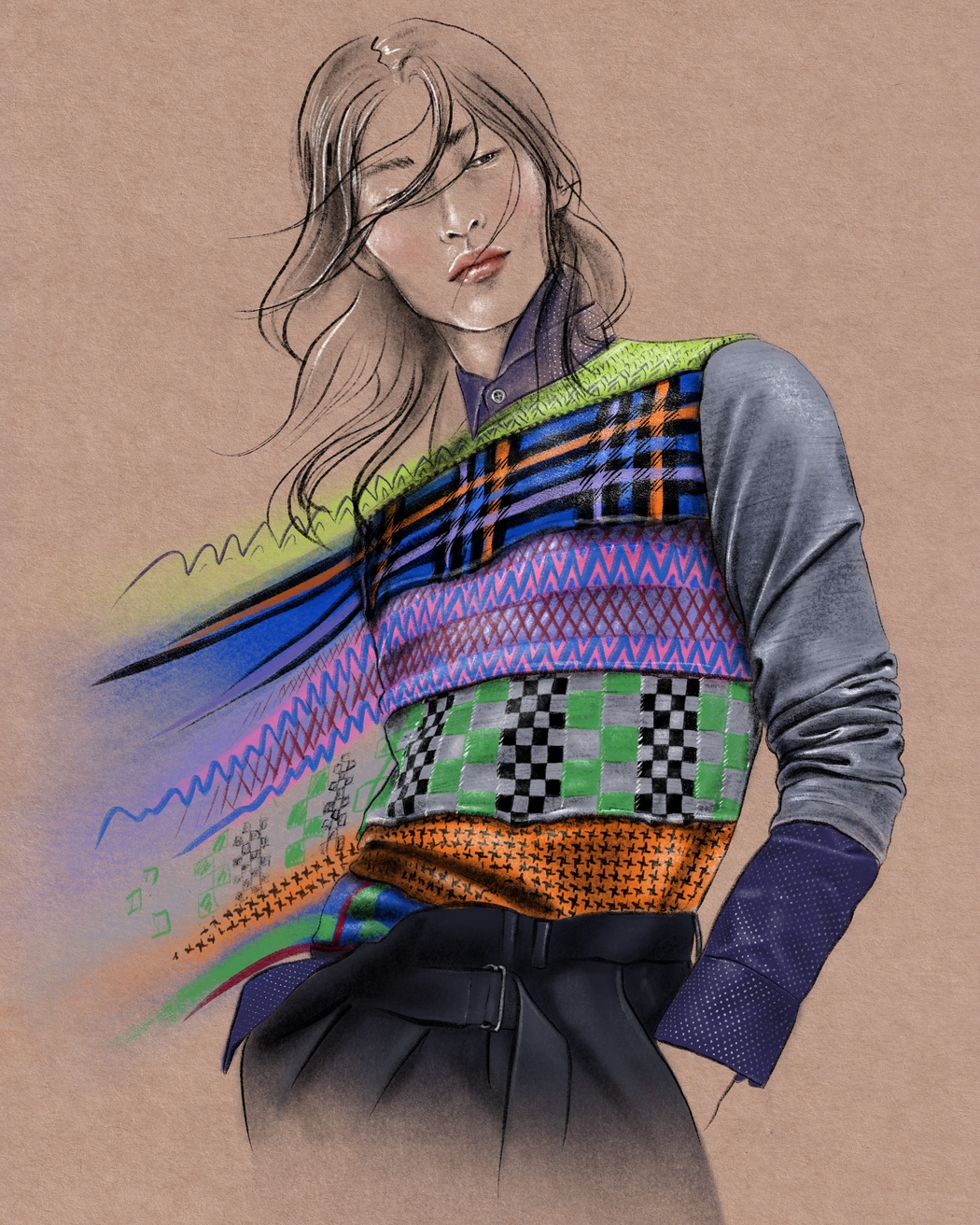Bianca Beltramello
Year of birth: 1996.
Where do you live: Milano, Italy.
Describe your art in three words: expressive, vibrant, detailed.
Your discipline: Nulla dies sine linea.
www.biancabeltramello.com | Instagram
Your artistic journey began with portrait painting. How did your background in portraiture influence your transition into fashion illustration and textile design?
My background in portrait painting has greatly influenced my approach to fashion illustration and textile design. Portraiture demands a keen eye for realism and anatomical accuracy, which is evident in my illustration style. Unlike traditional fashion illustration, where figures are often abstracted and elongated, my work focuses on capturing the natural expressivity and presence of the model. I believe the model’s face and emotions should harmonize with the outfit, creating a powerful synergy between the person and what they wear. To me, a successful illustration showcases how clothing can complement and enhance the model’s inherent character, allowing both to stand out.
 Bianca Beltramello | Bilel | 2024
Bianca Beltramello | Bilel | 2024
Fashion is an extension of identity in your art. How do you choose the subjects and garments you illustrate, and what story do you aim to tell through them?
When selecting subjects and garments for my illustrations, I’m guided by the emotions they evoke in me. Whether the model is someone I know well or just an acquaintance, I’m drawn to their unique expressions, movements, and the overall energy they convey. I pair these qualities with garments that resonate with similar feelings, creating a visual narrative that is both personal and evocative. Ultimately, my work reflects my own perspective and interpretation of the subjects and clothing, often revealing more about my own vision than the subjects themselves. It’s about capturing a moment, a feeling, and a connection between the person and the garment they wear.
 Bianca Beltramello | Cheikh | 2024
Bianca Beltramello | Cheikh | 2024
As a textile designer, your work merges art with functionality. What are some of the challenges and rewards of transforming your artwork into wearable patterns?
One of the main challenges I face in textile design is balancing my personal style with broader market appeal. My designs are often quite bold and eccentric, and while they excite me, I’ve learned that not everyone shares my taste. There’s a need to adapt and sometimes simplify my designs to ensure they are wearable for a wider audience. Despite this, I’ve come to appreciate the commercial aspect of design. Seeing someone on the street wearing one of my patterns is incredibly rewarding—it’s a tangible connection between my artistic vision and everyday life.
Your illustrations often blur the lines between the subject and their surroundings. What message or emotion are you trying to convey through this technique?
This technique reflects my belief that people are deeply influenced by their environments. We are constantly shaped by the places we inhabit and the people we surround ourselves with. By blending the subject with their surroundings in my illustrations, I aim to depict this interconnectedness. It’s a visual metaphor for how our identities are not just a result of who we are, but also where we come from and what we choose to engage with.
 Bianca Beltramello | Simone | 2024
Bianca Beltramello | Simone | 2024
You’ve collaborated with both luxury and emerging fashion brands. How does your creative process differ when working with these different types of brands?
Working with emerging brands is often more intimate and exciting. There’s a palpable sense of passion and innovation as these brands strive to carve out a unique identity in the fashion world. The creative process is more collaborative and experimental, focusing on bringing fresh ideas to life. In contrast, collaborating with larger, established brands tends to be more commercially driven, with a stronger emphasis on aligning with existing brand identities and market trends. Both experiences are valuable: while the latter teaches the importance of art in a commercial context, the former allows for a more personal and creatively fulfilling experience.
In your opinion, how can fashion illustrators and textile designers influence the broader fashion industry?
Fashion illustrators and textile designers play a crucial role in shaping the visual language of fashion. Even in minimalist trends, the essence of design is evident, whether through subtle patterns, logos, or distinct prints. The impact of illustration and textile design is visible across all facets of the industry—from the graphic tees of streetwear to the iconic monogrammed patterns of luxury bags. By infusing their creativity into garments and accessories, designers add depth and personality, making fashion not just about functionality but also about expression. Their work ensures that fashion remains a dynamic and evolving art form.
 Bianca Beltramello | Shunto | 2024
Bianca Beltramello | Shunto | 2024
What advice would you give to young artists who wish to explore the field of fashion illustration and textile design?
My advice to aspiring fashion illustrators and textile designers is to master the technical aspects of your craft. Understanding printing techniques, color management, and the various applications of different drawing styles is crucial. While creating stunning artwork is important, knowing how to translate that into wearable designs or digital formats is what truly makes it impactful. Technical skills provide the foundation that allows your creative vision to shine and be appreciated in the real world.

Leave a Reply